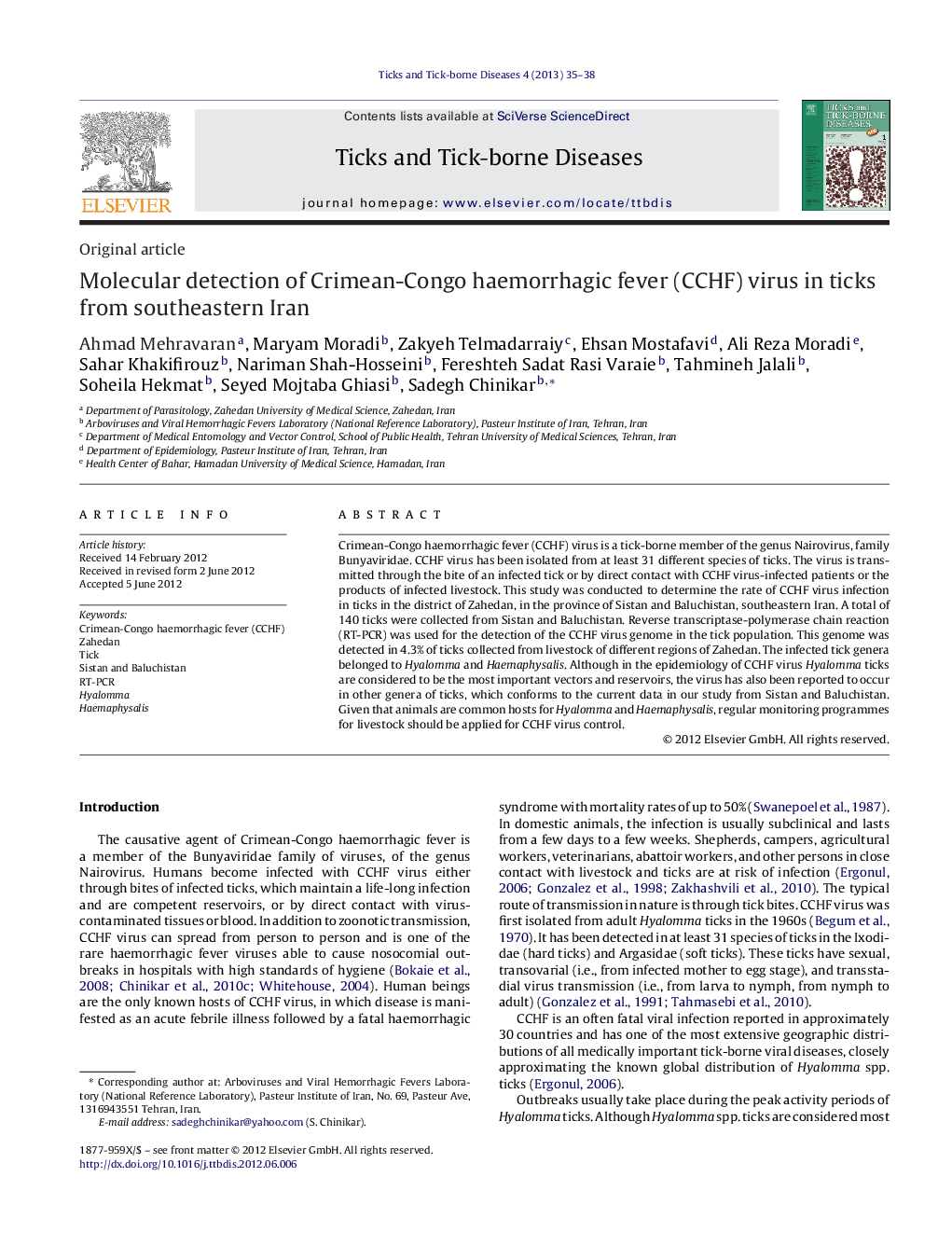| Article ID | Journal | Published Year | Pages | File Type |
|---|---|---|---|---|
| 2474226 | Ticks and Tick-borne Diseases | 2013 | 4 Pages |
Crimean-Congo haemorrhagic fever (CCHF) virus is a tick-borne member of the genus Nairovirus, family Bunyaviridae. CCHF virus has been isolated from at least 31 different species of ticks. The virus is transmitted through the bite of an infected tick or by direct contact with CCHF virus-infected patients or the products of infected livestock. This study was conducted to determine the rate of CCHF virus infection in ticks in the district of Zahedan, in the province of Sistan and Baluchistan, southeastern Iran. A total of 140 ticks were collected from Sistan and Baluchistan. Reverse transcriptase-polymerase chain reaction (RT-PCR) was used for the detection of the CCHF virus genome in the tick population. This genome was detected in 4.3% of ticks collected from livestock of different regions of Zahedan. The infected tick genera belonged to Hyalomma and Haemaphysalis. Although in the epidemiology of CCHF virus Hyalomma ticks are considered to be the most important vectors and reservoirs, the virus has also been reported to occur in other genera of ticks, which conforms to the current data in our study from Sistan and Baluchistan. Given that animals are common hosts for Hyalomma and Haemaphysalis, regular monitoring programmes for livestock should be applied for CCHF virus control.
